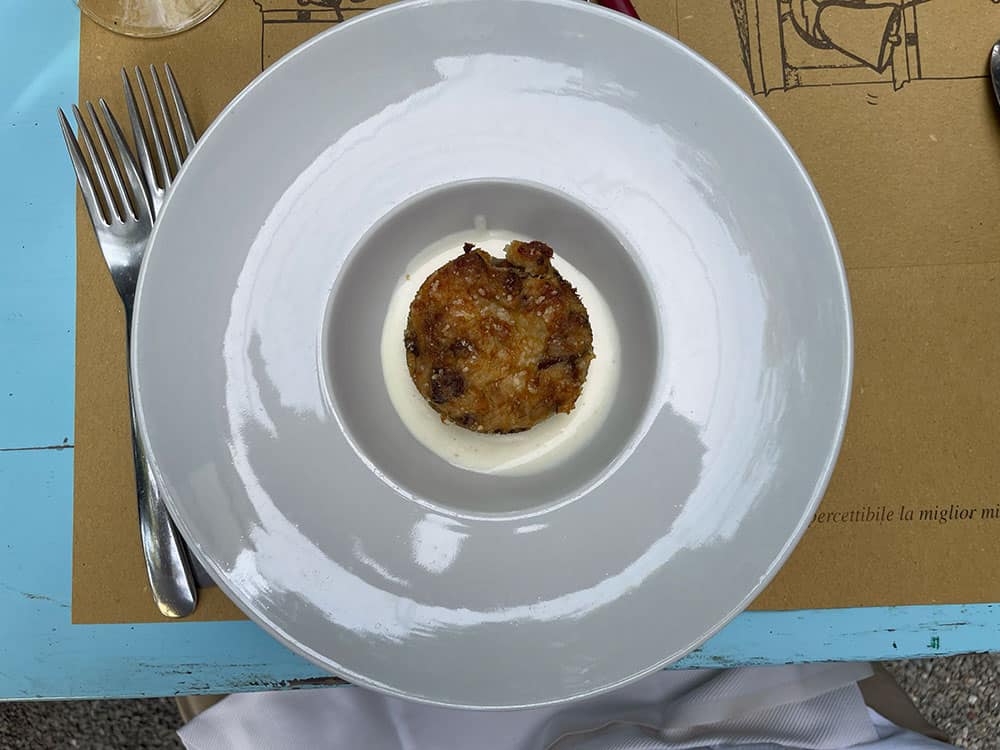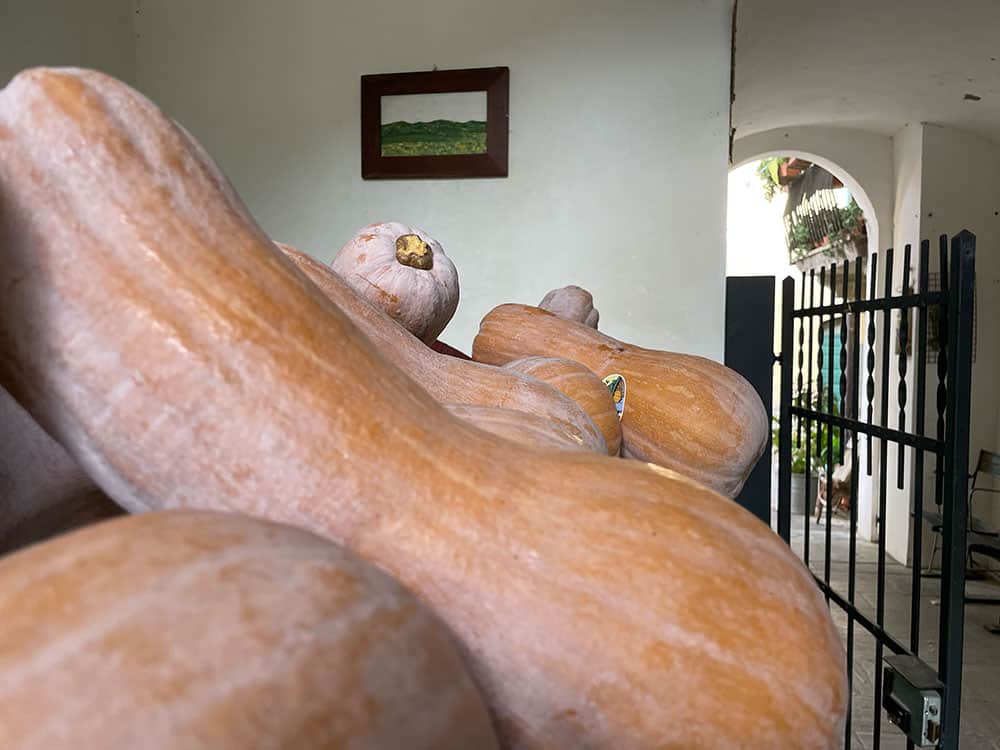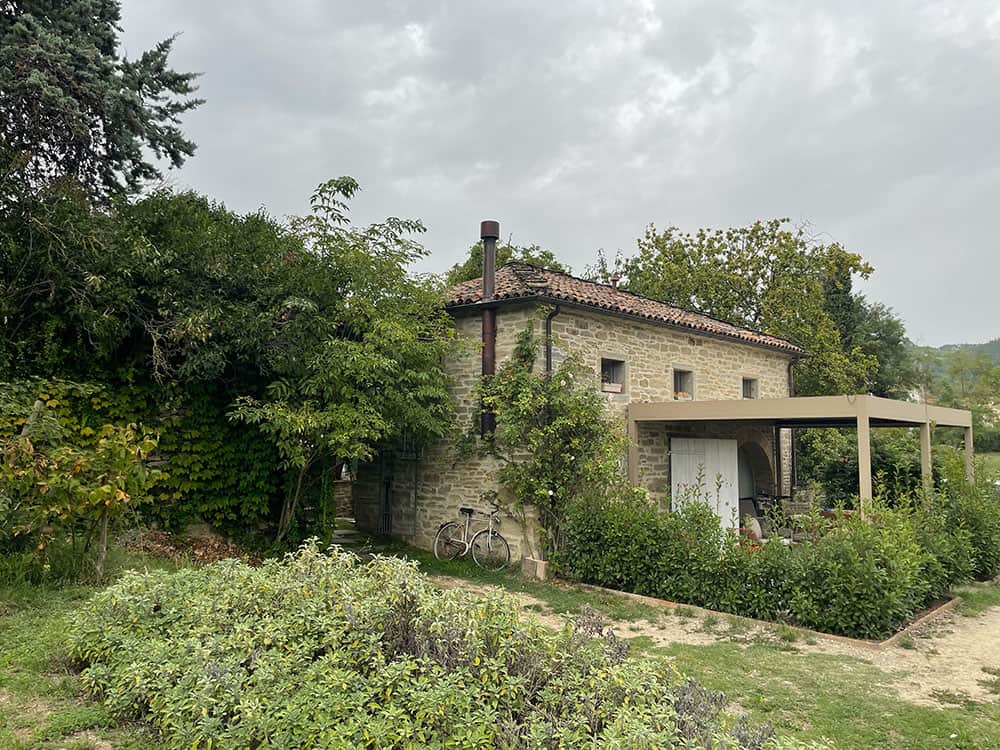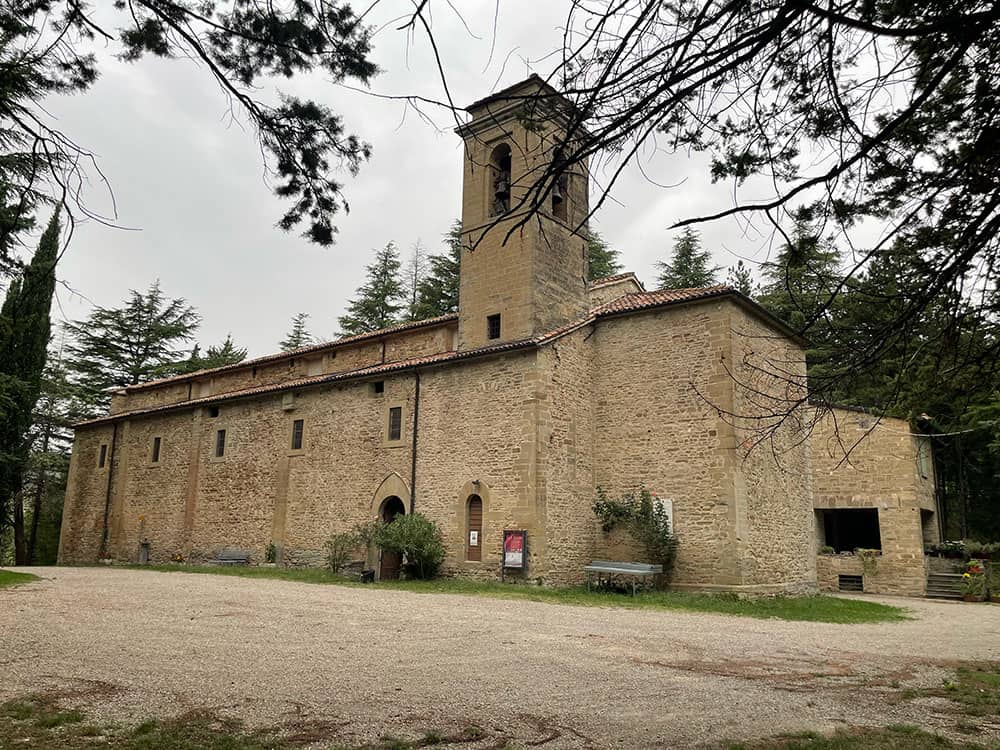At the beginning of September, Nazim published a beautiful blog post where he described the weekend we spent at Pianetto di Galeata, along the Bidente Valley in the province of Forlì, to attend the storytelling festival Come aqua – The Negative Capability Festival organized by our dear friend Matteo Caccia.
The festival was incredible—engaging, entertaining, and at times moving. Sadly, it came to an end, and we will have to wait for the 2025 edition to once again experience the wonderful atmosphere and delightful conversations of the past days.
What remains, however, and can be enjoyed at any time of the year, is the generous hospitality of the inn La Campanara, which has hosted the festival’s speakers and their entourage (including Nazim and myself) for years. The inn is part of an “albergo diffuso” and features a shaded garden restaurant near the old bell tower of the 16th-century church of Santa Maria dei Miracoli.
Twenty years ago, in 2004, a surveyor and a teacher, Roberto Casamenti and Alessandra Bazzocchi , embarked on the adventure of creating their restaurant from a dilapidated building overrun by brambles, which the village priest wanted to get rid of because it had become dangerous. It was a risky endeavor, but Alessandra, during our long conversation, explained that they had a backup plan: if things went wrong, they would turn the property into a vacation home.
They started with a small menu made with local and seasonal ingredients. Initially, it was challenging to get their guests to appreciate dishes like tripe and meatballs, traditionally considered humble foods. Not everyone understood that when an animal is raised free-range, not in confinement, it is necessary to use the entire animal, not just the filet and ribeye. This practice, which honors the animal’s life and minimizes waste, was common in the past.
In the early days, Alessandra and Roberto kept their jobs, but when things began to take off, it was only natural to dedicate themselves entirely to the new business. They purchased the adjacent house and began a renovation of what would become the inn—a stone building from the 1500s with six rooms (including one small house with a kitchen). The renovation took two years, and Alessandra confesses that she had to fight hard with the construction company to preserve the original character of the structure.
Each room is unique because they aimed to maintain as many details and characteristics of the original building as possible. In the courtyard, which separates the rooms from the garden, there is a lovely pool we thoroughly enjoyed between presentations, a Turkish bath, and a small wellness center.
A must-mention is breakfast: a few years ago, Roberto’s sister, who had been working in a pastry shop for some time, took over a bar just a few meters away, almost opposite the inn, where she prepares extraordinary breakfasts rich with all kinds of homemade sweets, local cold cuts, farmhouse bread, homemade yogurt, local honey, and much more. During the summer, when we were there, breakfast tables are set up along the main street, and guests can help themselves to a buffet inside the bar. Keeping Nazim away was a real challenge because the fragrance of freshly baked pastries spread everywhere, making it difficult to choose from so many delicious options.
Alessandra and Roberto’s work has been slow and steadfast: they had to compete with the region’s rich culinary offerings (we are in Romagna, after all), which doesn’t always prioritize quality. In contrast, our hosts use truly local, zero-kilometer products from small local producers and follow recipes that draw heavily from the ancient popular tradition—an oral heritage passed down from generation to generation and part of the cultural identity of the people of this area.
As mentioned, we are in Romagna, but in a rather peculiar part of this region. A little over a hundred years ago, with a royal decree in March 1923, some municipalities in this area were transferred from the province of Florence to that of Forlì. This change was strongly desired by Mussolini, so that the sources of the Tiber River, the river of Rome, would be part of the province where he was born. Thus, Pianetto di Galeata ceased to be Tuscan.
Thanks to our hosts and their perseverance, the gastronomic tradition of this Tuscan-influenced area still survives today, exemplified by pane sciocco (saltless bread), liver crostini, pappa al pomodoro, the use of wild herbs, chestnut flour, and many other details that make the dishes tasty and original—a tradition that Nazim and I had learned to appreciate during our travels in the Casentino area.
We are indeed at the foot of the Casentinesi Forests National Park, in a mountainous region we invite you to visit again because it is still wild and little frequented, full of charm and truly far from mass tourism.
Nearby, there are many things to see, and we must mention the Romanesque Abbey of Sant’Ellero, which overlooks the town of Galeata, not far from Pianetto, founded towards the end of the 5th century by the saint who retired to an ascetic life on the hill. Inside the church, descending into the crypt, behind the 8th-century sarcophagus containing the saint’s remains, is the cell where Saint Ellero would retreat to pray. The cell is about a meter wide and a little over a meter high, covered by a vault with a 25 cm diameter hole. According to an ancient tradition, the faithful can place their head in the hole carved into the rock while sitting on a stone seat to prevent back and head pain.
One final suggestion: if you decide to have lunch, dinner, or stay overnight at La Campanara, do not look for signs along the provincial road because you will not find any. Alessandra and Roberto have decided to wait patiently for their clients to seek them out on their own, and that’s how they became a Slow Food outpost—by working well and without haste. And when Roberto sits down at the table with you to explain something you didn’t know while sipping a glass of wine, you understand that they were right and thank them for never giving up.
Betti
La Campanara Web Site:
If you plan pon going here is the location:https://www.osterialacampanara.it/

































